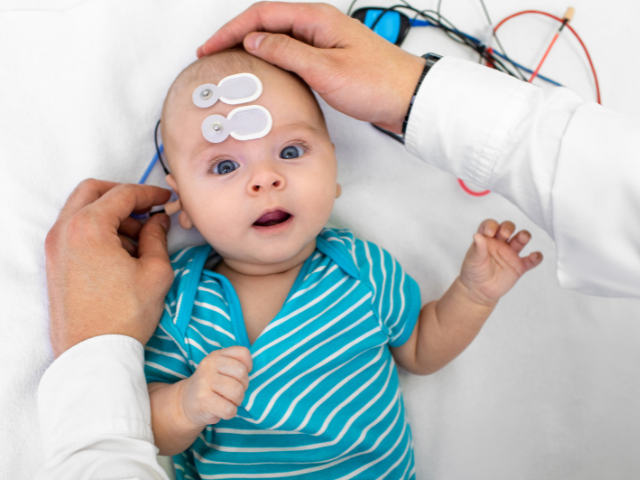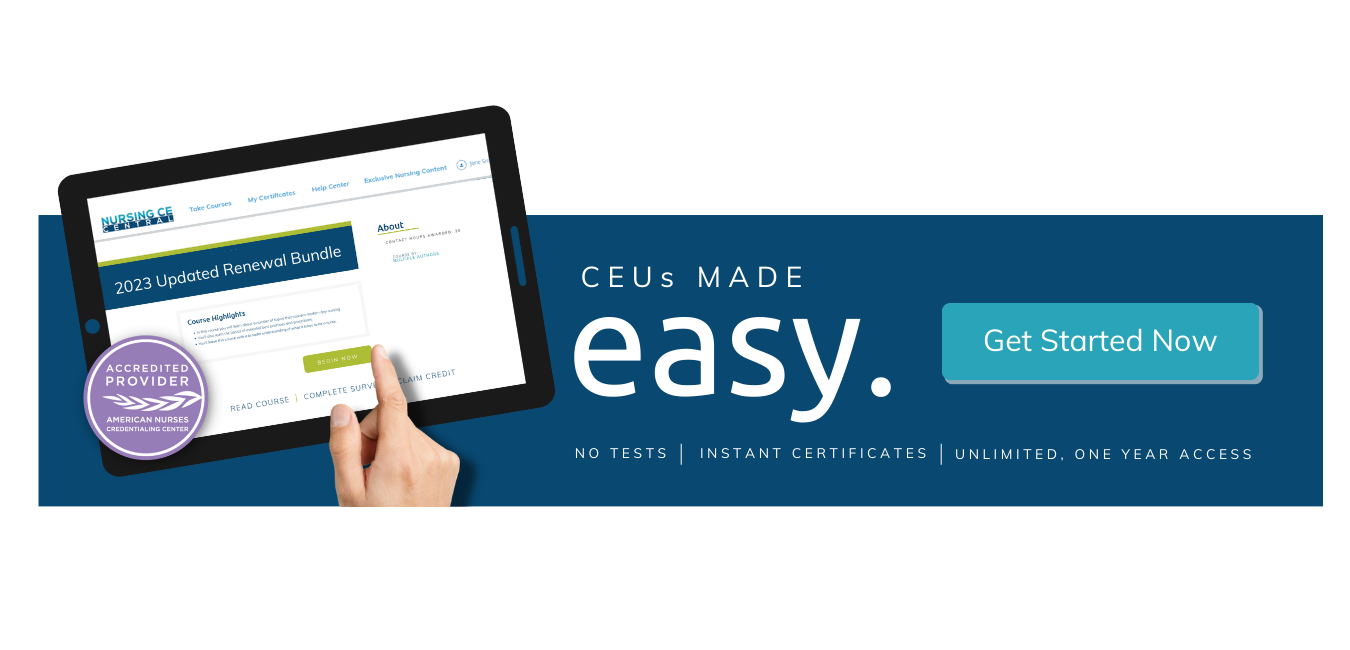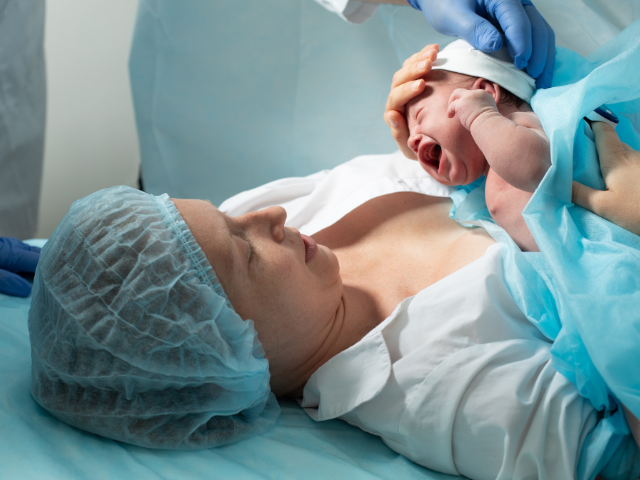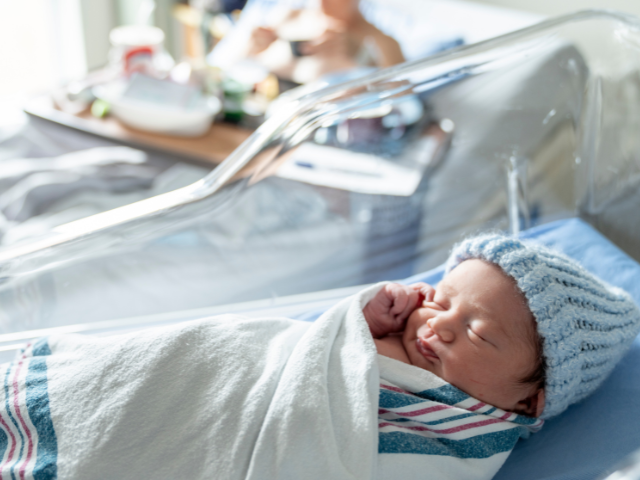Prenatal vs. Newborn Screening
In today’s world of varied child-rearing philosophies, one common thread exists: parents want the best for their children. In preparation for their new family member, families often spend months planning and researching, building a nursery, registering for supplies, and attending important prenatal appointments and educational programs. Families often also screen for certain genetic and developmental anomalies during prenatal testing to determine how to diagnose and manage complications before their baby is born.
Finally, that long-awaited day comes — the delivery is complete, recovery begins for the baby and birthing parent, known issues have been addressed, and everyone can recover and go home, right? Well, not so fast!
Each state recommends an important set of newborn testing that typically occurs before clearing babies for discharge. However, some parents may ask, “Didn’t we already do these tests while our baby was in the womb?”
The answer is that babies specifically receive this series of unique newborn screening tests after birth, commonly around the first day of life. These tests cannot be completed prenatally, as they generally screen for different things. While limited overlap may exist between prenatal genetic testing and newborn screening, post-birth screening is unique to newborns and strongly recommended. In addition, not all families receive the same level of prenatal testing.
Newborn screening makes a difference in the lives of infants. According to the American College of Obstetricians and Gynecologists (ACOG), approximately “one in every 300 babies are found to have a health condition identified by newborn screening.” The majority of these infants don’t have a family history of the disorder.
Most states use a one-screen model where a single round of newborn screening takes place 24-48 hours after birth. Currently, 13 states use the less common two-screen model, where a second round also takes place 1-2 weeks later at a healthcare provider’s office.
An organization called Baby’s First Test provides a helpful Newborn Screening Awareness Card for families.
By receiving the newborn screening blood spot, pulse oximetry, and hearing screenings shortly after birth, all babies can have the healthiest start to life possible.
Breakdown of Individual Newborn Screening Components
Blood Test (for Genetic and Metabolic Disorders)
The blood spot test screens infants for genetic, metabolic and hormonal disorders. Trained providers can carry out the test on babies born in the hospital, birthing centers, or at home.
Providers typically collect a small amount of the baby’s blood on several circles on an absorbent paper. The blood often comes from a small heel poke, which heals quickly.
Blood samples are then sent to a state laboratory, either in a vial or on the labeled absorbent paper. Results typically process within a week, after which families are informed of any positive test results. However, families should be encouraged to ask about their baby’s blood spot test at subsequent “well baby” visits.
This specific collection of newborn disorders in the blood test, while rare, can cause life-threatening symptoms if left untreated. Early detection is key to protecting infants from these preventable health problems. These disorders are considered hidden and cannot be diagnosed by a parent or healthcare provider simply looking at the baby.
Disorders included in the newborn screening blood test, with the first four being most common, include:
- Congenital thyroid disorders
- Cystic fibrosis
- Sickle cell disease
- MCAD deficiency
- Spinal muscular atrophy (SMA)
- Beta thalassemia
- Maple syrup urine disease (MSUD)
- Tyrosinemia
- Galactosemia
- Phenylketonuria (PKU)
- Other milk and protein processing disorders
Certain portions of this blood test even measure how a baby processes elements of breast milk or formula. This makes the timing of the test crucial.
Each state uses national guidelines to create its own standardized list of newborn disorders to screen. The Secretary’s Advisory Committee on Heritable Disorders in Newborns and Children (SACHDNC) recommends a core panel of more than 30 congenital disorders for testing, which is finalized by the Secretary of Health and Human Services. The current list of disorders can be viewed in the Recommended Uniform Screening Panel (RUSP).
Many states test for disorders beyond the core list, which changes over time with developing technology, research and lobbying or advocacy efforts. To find the specific disorders currently tested by each state, visit the Baby’s First Test website.
Pulse Oximetry Test (for Critical Congenital Heart Defects)
Another component of routine newborn screening includes the pulse oximetry test for critical congenital heart defects (CCHDs). Caregivers may refer to this test as the “CCHD” screen, which looks for a collection of cardiac problems where the heart does not form correctly.
The test is carried out by placing a small external sensor on the baby’s foot and hand. This probe painlessly measures the baby’s blood oxygen level. Babies with CCHDs often have low oxygenation in their blood. They may also have a discrepancy in oxygen levels between their hand and foot.
If a baby does not pass their initial pulse oximetry screen, it may be repeated. Some babies require further testing to assess the functioning of their heart and lungs. These exams might include an echocardiogram, electrocardiogram, or chest X-ray. A healthcare provider may need to explain these tests and any necessary follow-up.
However, the pulse oximetry screen does not identify all possible heart problems. A passing screen is simply a snapshot in time of the baby’s blood oxygen levels. Babies who develop concerning symptoms in the future — including difficulties with breathing, energy level or eating — should receive further medical assessment.









